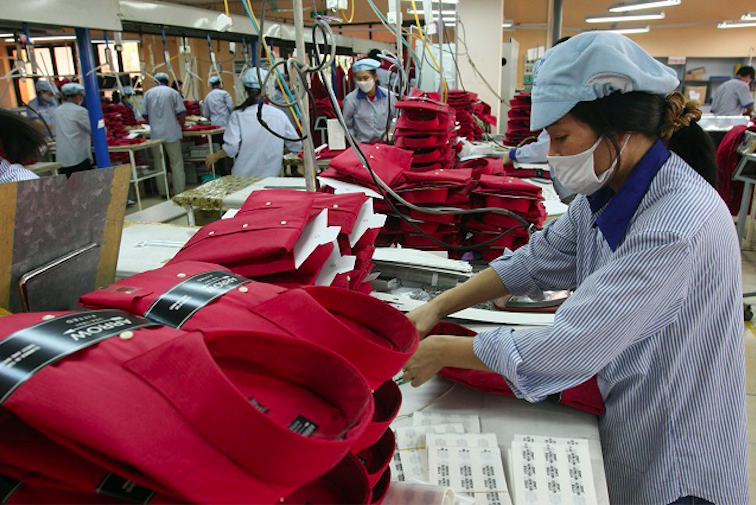Vietnam textile industry to benefit from FTAs
The RCEP with flexible rule of origins is seen as a plus point for Vietnam’s textile industry to further penetrate potential markets.
Despite mounting challenges from the Covid-19 pandemic, new free trade agreements, including the recently-signed RCEP, along with local firms’ own efforts in a new circumstance, are opening up new opportunities for exports.
| Production at Garment 10. Photo: Thanh Hai. |
Chairman of the Vietnam Textile and Apparel Association (Vitas) Vu Duc Giang said this year, many textile firms have to move away from their traditional products to produce medical protective gear, especially face masks.
“Such a change would require further investment in technologies and retraining of workers to adapt to a new environment, and consequently would lead the textile sector to fall short of the export target of US$42 billion for 2020,” added Mr. Giang.
At this time of last year, Vietnamese textile firms were flooded with pre-orders even for the first half of the following year. However, the Covid-19 pandemic has changed customers behavior globally as the world is now focusing on basic necessities and health equipment.
“Major markets for Vietnam’s textile and apparel products are currently struggling with the Covid-19 pandemic, causing declines of 80 – 90% in their purchases,” informed Mr. Giang.
This year, Vietnam’s textile exports are estimated to reach US$35.27 billion, down 9.27% year-on-year or US$3.6 billion. The contraction in growth is significantly lower compared to other countries, taking into consideration that global demand for textile products has declined by 25%.
New opportunities from RCEP
Mr. Giang noted for next year, the textile industry would face both opportunities and challenges, especially as the Covid-19 pandemic could persist for another one to two years.
“In 2021, the textile export revenue is forecast to hit US$37 – 38 billion, but on the condition that the world could contain the Covid-19 pandemic in the first quarter and purchasing power from major markets recovers,” Mr. Giang asserted.
Mr. Giang also pointed to the RCEP with flexible rule of origins as a plus point for Vietnam’s textile industry, in turn opening up more opportunities for exports. As such, Vietnam’s garment products could further penetrate the Chinese and Japanese markets, which previously were limited due to requirements of the rule of origins.
“FTAs are driving forces for the local textile industry to access new customers, technologies and corporate governance, for which the sector could realize the export target of US$100 billion by 2030,” he said.












